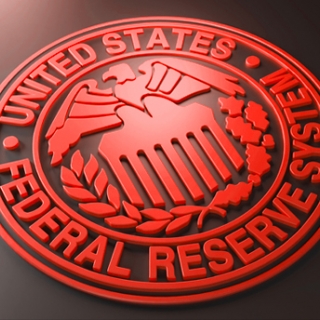


The case for a U.S. interest rate cut remains unresolved as Federal Reserve officials head into their policy meeting later this month, with data showing fresh signs of higher inflation and President Donald Trump intensifying his demands for lower borrowing costs.
Trump appeared near the point of trying to fire Fed Chair Jerome Powell this week, but backed off with a nod to the market disruption that would likely follow, and the U.S. central bank's policy rate outlook remains virtually unchanged despite the drama.
Fed officials haven't mentioned raising rates, but headlines about an imminent Powell firing caused U.S. Treasury yields to jump, not exactly what Trump wants as he yearns for cheaper financing for massive federal deficits.
On Friday the president repeated his criticism of Powell and said the Fed's policy rate should be 1%, a low level typically used by the Fed to boost a weak economy not, as the Fed is currently attempting to do, temper inflation with tight monetary policy.
The Fed is expected to hold its benchmark rate steady in the 4.25%-4.50% range at its July 29-30 meeting, a level policymakers regard as at least moderately restrictive. The Fed last cut rates in December, when policymakers started assessing the possible impact on prices from the import tariffs that Trump quickly began imposing after returning to the White House in January.
Rate cuts are expected to resume later this year, with investors anticipating a quarter-percentage-point reduction in September.
But those odds slipped to nearly 50-50 this week after the Consumer Price Index showed inflation rose to 2.7% in June from 2.4% in the prior month. A trend that saw declining prices for goods is beginning to shift, adding to overall inflation, in a sign businesses may have begun passing some of the tariffs along to consumers.
Powell and other Fed officials said they expected price increases to quicken this summer. They have been reluctant to cut rates until it is clear how much inflation is in train, how long it persists, and whether the economy begins to slow enough to ease the pressure on prices.
Fed policymakers will receive two more months of jobs and inflation data before their meeting in September, and investors - and Trump administration officials - will be listening closely to Powell's post-meeting press conference on July 30 for language that leans towards a rate cut then or not.
In the final comments before policymakers begin a "blackout" period on public statements before the next meeting, the focus remained largely on inflation and how June's uptick showed prices rising across an array of largely imported goods.
Trade and tariff issues are now "the key drivers of the U.S. economic outlook," Fed Governor Adriana Kugler said on Thursday, adding that with price pressures building, the central bank needed to keep rates steady "for some time" to hold inflation and inflationary psychology in check.
Source: Investing.com
Former U.S. President Donald Trump threatened to impose tariffs on members of the BRICS group of nations on Friday, warning the alliance would quickly collapse if it ever becomes a significant economi...
Federal Reserve Governor Chris Waller, an advocate for an immediate interest rate cut, said on Friday he would accept the job as head of the U.S. central bank if asked by President Donald Trump, but s...
Federal Reserve Governor Christopher Waller said concerns about private-sector hiring have fueled his call for the central bank to cut interest rates this month. "The private sector is not performing ...
Federal Reserve Chairman Jerome Powell, in a letter on Thursday, rebutted criticism leveled at the central bank by a top White House official regarding the $2.5 billion renovation project. "We take se...
Federal Reserve Chair Jerome Powell on Thursday responded to a Trump administration official's demands for information about cost overruns for a renovation project at the central bank's Washington hea...
The U.S. dollar slipped against the euro on Friday but held on to weekly gains, as investors weighed expected Federal Reserve policy amid signs that tariffs may be starting to increase some inflation pressures and as U.S. President Donald Trump...
Former U.S. President Donald Trump threatened to impose tariffs on members of the BRICS group of nations on Friday, warning the alliance would quickly collapse if it ever becomes a significant economic force. "When I heard about this group from...
Stocks in the US closed near the flatline on Friday as investors weighed President Trump's push for higher tariffs on the European Union against strong economic data and corporate earnings. The S&P 500 and Nasdaq 100 finished mostly muted near...
 The Producer Price Index (PPI) for final demand in the US rose 2.3% annually in June, according to data published by the US Bureau of Labor...
The Producer Price Index (PPI) for final demand in the US rose 2.3% annually in June, according to data published by the US Bureau of Labor...
 The U.S. central bank will probably need to leave interest rates where they are for a while longer to ensure inflation stays low in the face of...
The U.S. central bank will probably need to leave interest rates where they are for a while longer to ensure inflation stays low in the face of...
 Unemployment claims fell 7,000 to 221,000 in the week ending July 12, compared with the median estimate of 233,000, according to Labor Department...
Unemployment claims fell 7,000 to 221,000 in the week ending July 12, compared with the median estimate of 233,000, according to Labor Department...
 Asia-Pacific markets fell after U.S. President Donald Trump said Tuesday that he had struck a preliminary trade agreement with Indonesia, which will...
Asia-Pacific markets fell after U.S. President Donald Trump said Tuesday that he had struck a preliminary trade agreement with Indonesia, which will...